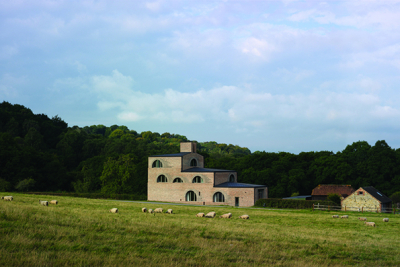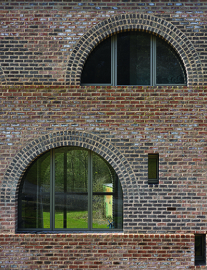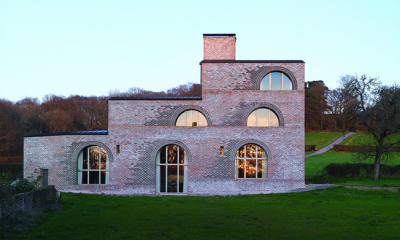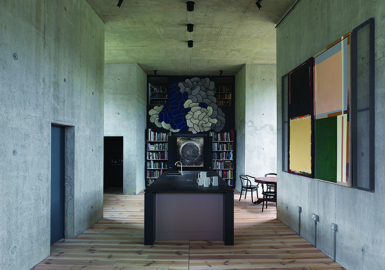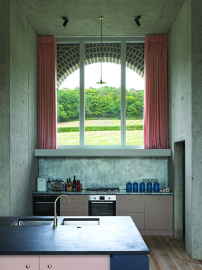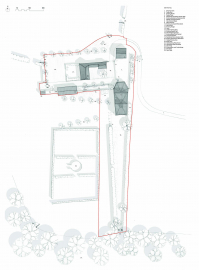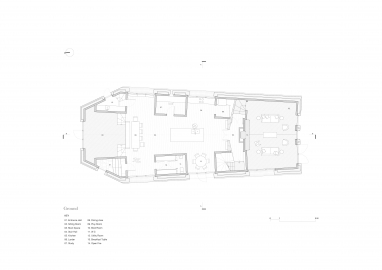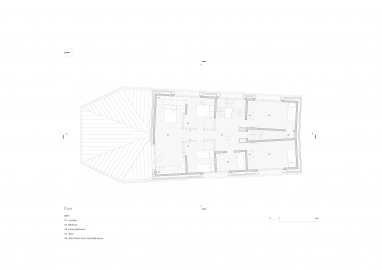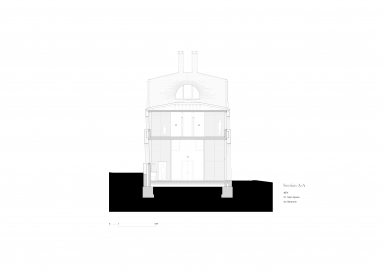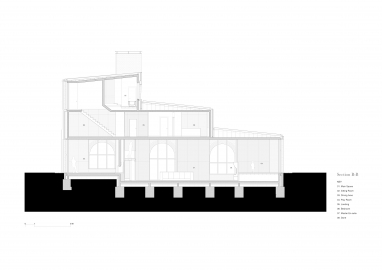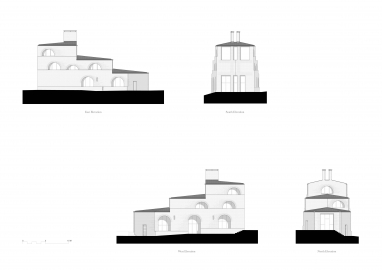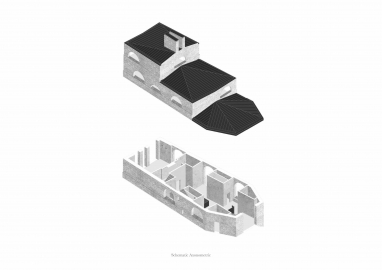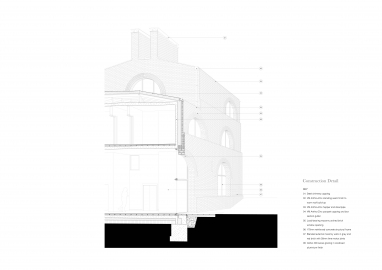Nithurst Farm
Built from structural concrete and wrapped in a thick brick skin, Nithurst Farm is a new-build home for the architect and his family in south-east England. Poetically located in a secluded valley, the house relates to the specificities of its ancient rural setting, whilst drawing on a breadth of European culture and history from Palladio to Tarkovsky.
This is a new house at a former farm in the South Downs National Park. The ground floor is organised around a contemporary version of a medieval ‘great hall’, containing the kitchen and space for 25 people to eat. It is overlooked from the north by a raised children’s playroom, and is defined by six concrete towers containing functions such as study, WC, larder &c., giving the character of a ‘town-square’ for family life. A separate sitting room with an open fire occupies the south end of the house, with views out to the landscape.
Reached by a serpentine stair, the first floor contains bedrooms for children and guests – the latter have en-suite bathrooms placed in the mezzanine below. All the guest bedroom walls are movable partitions for long-term flexibility. A central stair leads up to the master suite in the 2nd floor tower. Striking symmetrical spaces offer views in all directions.
Nithurst Farm feels both ancient and contemporary: weighty & tactile materials respond to the nearby farm buildings, whilst the abstraction of its stepped form is suggestive of minimalist art – and Roman ruins. The house seeks the universal in the personal, through the lens of film: Russian filmmaker Andrei Tarkovsky’s Stalker inspired the sense of destination embodied in the house. Stalker describes a quest to navigate a forbidden ‘Zone’ in order to reach a room at its heart, where it is rumoured that one’s deepest wishes are granted. This quest is analogous to designing a house: building a ‘home in the world’ is a kind of spiritual journey. Nithurst’s main ‘great hall’ space is inspired in part by the film, but also by Vredeman de Vries’s Renaissance drawings and by Palladio’s plan for the Villa Barbaro. It is tapered on N-S axis, creating a false perspective that heightens the sense of a journey to the main sitting room. A dark, labyrinthine passage leads to this light-filled room, hung with French & Flemish tapestries, exaggerating its impact. At a difficult moment for Britain & Europe, Nithurst Farm’s design affirms the continuing relevance of our shared history & culture.
Nithurst Farm is sited in a protected landscape, so is designed for a 500+ year life. It is built from in-situ reinforced concrete with a thick brick outer skin: a modern house wrapped in a Roman ruin. Structural arched brick window openings give cadence to the long side elevations. The south elevation rises to form a 3-storey tower. The roof is zinc.
Placing the glazing in the concrete zone allowed the rear of the brick arches to be visible from the inside, differentiating the inner and outer leaves. Extra wide 30mm lime mortar joints are used in the brickwork to emphasise the weight and sculptural form of the building. This avoids movement joints, improves the overall appearance of the economical, standard bricks, and plays a visual game of scale. Darker bricks run north from the arches giving a sense of movement to this weighty building.
Internally the exposed concrete walls and ceilings are left unfinished, whilst flooring materials are maritime pine and sisal carpet. The house is temperature-stable, and the concrete structure uses 50% recycled material. A highly insulated thermal mass combined with a robust design means Nithurst Farm is built to meet its long-life target.

